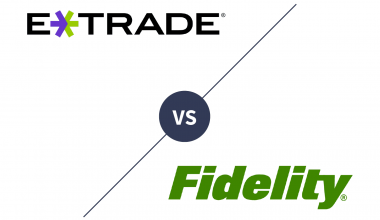A Tax-Free Retirement Account (TFRA) is a type of cash-value life insurance plan designed to help you avoid paying taxes on your retirement income. It’s a type of investment account that is governed by the Internal Revenue Code. They are designed to give you tax-free income in retirement. The question now is how can I set up a tax-free retirement account?
In this post, we’ll explain more about a tax-free retirement account and how it works. We’ll also explain any current federal or state tax advantages or disadvantages that may change the viability of your account as a retirement savings strategy shortly. Let’s get started!
What Is A Tax-Free Retirement Account?
Tax-Free Retirement Accounts are a type of investment account that is governed by Internal Revenue Code section 7702. They are made to give you tax-free income in retirement, similar to a Roth IRA. However, these accounts may also be referred to as a section 7702 plan.
These plans provide investors with an alternative to a traditional 401(k), cash balance plan, or IRA in terms of tax-free retirement.
The crucial distinction is that they are not, in fact, retirement accounts. They have qualified life insurance contracts, which they use to generate tax-free income in retirement.
The most important benefit of the plans, however, is that life insurance can be structured to be tax-free. So, if the plans are properly structured, they should make perfect sense. Life insurance should not automatically turn off investors. The income generated by the policy is tax-free, so it functions similarly to a Roth.
Who Can Invest In A Tax-Free Retirement Account?
A Tax-Free Retirement Account is essentially an investment account with some distinct features. In contrast to a traditional 401(k) or Roth IRA, which requires you to be at least 18 years old to open an account, there are no age or gender restrictions when it comes to opening a tax-free retirement account.
Moreover, unlike other retirement accounts, such as a 401(k), where withdrawals before the age of 59 1/2 are usually subject to an early withdrawal penalty, there are no penalties for withdrawing funds from your TFR Account before the age of 59 1/2.
Tax-free retirement accounts are among the few that are entirely tax-free, with no annual contribution limits or income restrictions.
What Are the Tax-Free Retirement Account Qualifications?
A Tax-Free Retirement Account functions similarly to a Roth IRA. All contributions made to the account are always taxed.
Unlike a Roth IRA, TFRA doesn’t have IRS-mandated withdrawal restrictions. If you expect to be in a higher tax bracket when you retire, a TFRA is an excellent way to reduce tax implications. Your funds in a TFRA are indexed to the market rather than investing in it. So if the market rises, you will be credited with a profit.
However, if the market falls, you do not suffer a loss. A TFRA is not restricted by IRA rules and therefore allows access to funds. Other retirement savings vehicles have little to no liquidity if any at all.
Similar to long-term care plans, tax-free retirement savings accounts provide benefits for chronic, critical, and terminal illnesses. They also have a death benefit that lasts forever. TFRAs are specially designed life insurance policies that take advantage of tax laws.
The plan’s permanent death benefit kicks in on the first day of coverage. A TFRA, unlike qualified retirement plans, has no contribution limits. However, it must follow the rules and laws of life insurance.
How Can You Set Up A Tax-Free Retirement Account?
The first step to how you can set up a tax-free retirement account is to consult with a financial advisor about your options. Section 7702 requires that the plans be carefully structured. As a result, you can’t do it on your own.
To set up a tax-free retirement account the following are the five steps:
#1. Consult With Your CPA
Make an appointment with your CPA first to go over your overall financial and tax situation. The CPA is in the best position to review current retirement funds and savings and assist you in determining what your tax bracket will be in retirement.
#2. Identify the TFRA Structure
Remember that these are technically tax-advantaged life insurance policies. What kind of life insurance do you require, and what are the policy limits? These concerns should be addressed too.
#3. Examine the Contribution Requirements
Contribution limits for these plans are lower than those for Roth IRA and Roth 401(k). Consider how much money you can afford to contribute to these plans each year.
#4. Consult With Your Financial Advisor
How much money can you make? What is your ultimate goal in terms of income? These are questions that you should discuss with your financial planner.
#5. Consider Other Alternatives
Depending on your current tax bracket, the cash balance plan or other defined benefit plan structure may make more sense. If you have a high tax bracket, you should consider accounts that are tax-free first.
Set up your tax-free retirement account by following the steps provided above.
How Does a Tax-Free Retirement Account Work?
A Tax-Free Retirement Account operates in the same manner as a Roth IRA. You will deposit funds into the account and pay taxes on each contribution you make; you will not be eligible for tax breaks. Also, you will contribute after-tax funds.
The maximum amount you can put into a tax-free retirement account is dependent on the type of account. A yearly contribution limit applies to TFRAs as well.
The Roth IRA contribution limit is $6,000 per contributor for tax years 2021 and 2022. Contributors aged 50 and up can also contribute an additional $1,000.
The contribution to a Roth 401(k) account is significantly higher. In 2022, taxpayers can contribute up to $20,500. Individuals aged 50 and up can contribute an additional $6,500.
Your contribution limit will also be determined by your previous year’s performance. You should also be aware that your contribution room from the previous tax year is carried forward.
For example, in 2021, you could contribute up to $6,000 to your account. Unfortunately, you lacked sufficient funds and could only contribute $3,000.
Your limit will increase by $3,000 in the tax year 2022 due to the unused room in 2021. This means that you can contribute up to $9,000 in the tax year 2022.
The Advantages Of A Tax-Free Retirement Account
A tax-free retirement account, in addition to minimizing taxes during retirement, can be opened at any age and allows you to save money free of tax over time.
They also have a triple tax advantage that no other type of retirement account has. The gains and retirement income are tax-free.
The Disadvantages Of A Tax-Free Retirement Account
TFRA plans also have a death benefit, so you must be medically qualified with the life insurance company before purchasing. You may not be eligible if you have had major health issues.
Again, if you are currently in a higher tax bracket, you will not receive a tax deduction on your contribution limit because premiums are paid with after-tax dollars.
How TFRA Differs From Roth IRA And Roth 401k
While both structures provide tax-free retirement, the Roth IRA and Roth 401(k) are more limited due to contribution limits.
Many employers do not offer Roth 401k contributions. However, because TFRA is not company sponsored, it can be carried out outside of existing retirement structures.
Learn to weigh your options against those of a traditional IRA or 401(k) plan. Make sure to start with taxable accounts. These plans will provide immediate tax deductions as well as tax-deferred growth.
401(k) plans, once again, are company-sponsored, and many companies do not provide them. 401(k) plans do not provide insurance but do typically provide more flexible investment options.
Conclusion
A Tax-Free Retirement Account is an excellent choice for those seeking downside market protection, uncapped upside rewards, and the ability to pass wealth on to future generations tax-free. TFRA is poorly understood. They can, however, be an excellent strategy in the right circumstances.
Many people will never be able to save significantly in a Roth. A TFRA, on the other hand, can be designed to make significant contributions. Contribute to your 401(k) and IRA, and consider a TFRA as a supplement to the strategy. The more income streams you generate, the better off you will be in retirement.
Tax-Free Retirement Account FAQs
What is the maximum amount I can contribute to a Tax Free Retirement Account?
The amount you can put into your TFRA is determined by the type. The Roth IRA contribution limit for tax years 2021 and 2022 is $6,000 per individual, plus an additional $1,000 for taxpayers 50 and older.
What are the Advantages Of A Tax-Free Retirement Account?
- Minimizing taxes during retirement
- Can be opened at any age and allows you to save money free of tax over time.
- The gains and retirement income are tax-free.
Related Articles
- ROTH 401(K): Withdrawal Rules and Comparisons
- Best Tax-Free Investments In 2022
- SPOUSAL ROTH IRA: What It Is and How It Is Used
- HOW TO BUILD WEALTH: Secrets to Building Wealth
- 401k BENEFITS: 2022 401k Benefits for Employees and Employers(+Detailed Guide)
(Xanax)






